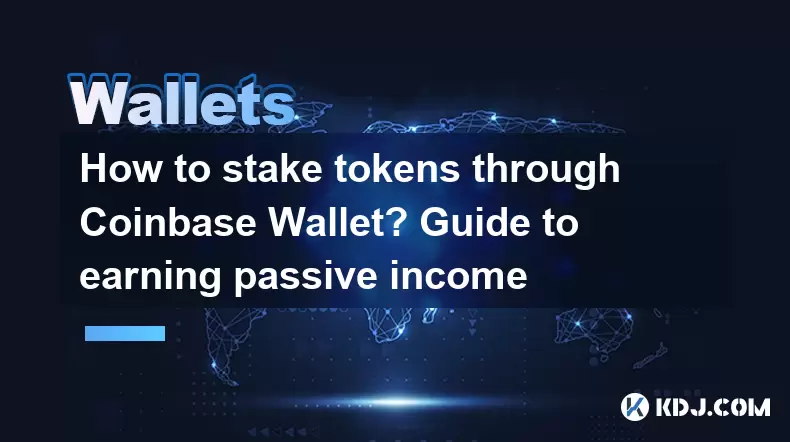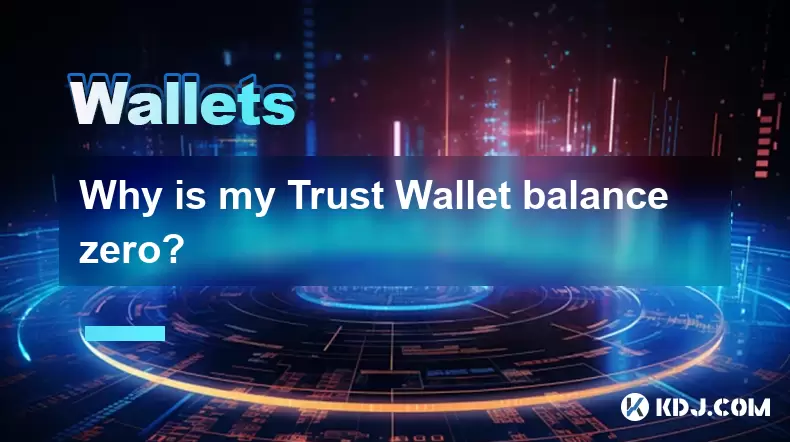-
 Bitcoin
Bitcoin $112400
-1.07% -
 Ethereum
Ethereum $3409
-3.27% -
 XRP
XRP $2.784
-6.60% -
 Tether USDt
Tether USDt $0.9997
-0.03% -
 BNB
BNB $739.3
-2.09% -
 Solana
Solana $158.0
-2.90% -
 USDC
USDC $0.9998
-0.02% -
 TRON
TRON $0.3213
-0.94% -
 Dogecoin
Dogecoin $0.1929
-5.01% -
 Cardano
Cardano $0.6974
-2.82% -
 Hyperliquid
Hyperliquid $36.69
-2.31% -
 Sui
Sui $3.327
-4.80% -
 Stellar
Stellar $0.3672
-5.18% -
 Chainlink
Chainlink $15.65
-3.07% -
 Bitcoin Cash
Bitcoin Cash $525.0
-1.68% -
 Hedera
Hedera $0.2291
-6.00% -
 Avalanche
Avalanche $20.91
-2.96% -
 Ethena USDe
Ethena USDe $1.000
0.00% -
 Toncoin
Toncoin $3.520
-1.12% -
 UNUS SED LEO
UNUS SED LEO $8.968
0.14% -
 Litecoin
Litecoin $105.7
0.26% -
 Shiba Inu
Shiba Inu $0.00001181
-1.79% -
 Polkadot
Polkadot $3.492
-2.08% -
 Uniswap
Uniswap $8.800
-3.10% -
 Dai
Dai $0.9999
-0.01% -
 Monero
Monero $289.9
-3.17% -
 Bitget Token
Bitget Token $4.243
-1.27% -
 Pepe
Pepe $0.00001006
-3.67% -
 Cronos
Cronos $0.1248
-5.68% -
 Aave
Aave $249.7
-2.50%
How to stake tokens through Coinbase Wallet? Guide to earning passive income
Staking tokens via Coinbase Wallet lets you earn passive income while supporting blockchain security; choose tokens wisely and secure your wallet for optimal results.
May 19, 2025 at 08:00 am

Staking tokens through Coinbase Wallet is a popular method for cryptocurrency enthusiasts to earn passive income. By participating in staking, users can support the operations and security of a blockchain network while receiving rewards in return. This guide will walk you through the process of staking tokens using Coinbase Wallet, ensuring you understand each step clearly.
What is Staking and Why Should You Do It?
Staking involves holding funds in a cryptocurrency wallet to support the operations of a blockchain network. By staking your tokens, you help maintain the network's integrity and security. In return, you are rewarded with additional tokens. This process is particularly common in Proof of Stake (PoS) and its derivatives, where validators are chosen to create new blocks based on the number of coins they hold and are willing to "stake" as collateral.
The primary reason to stake your tokens is to earn passive income. Unlike traditional investments, staking does not require active management, making it an attractive option for those looking to grow their crypto holdings with minimal effort. Additionally, staking can be more environmentally friendly than mining, as it requires less energy.
Setting Up Coinbase Wallet for Staking
Before you can start staking, you need to set up and configure your Coinbase Wallet. Follow these steps to get started:
- Download and Install Coinbase Wallet: Visit the official Coinbase website or app store to download the Coinbase Wallet app on your mobile device. Ensure you are downloading from a trusted source to avoid scams.
- Create a New Wallet or Import an Existing One: Open the app and choose to create a new wallet or import an existing one using your recovery phrase. If you are new to Coinbase Wallet, you will be prompted to set up a secure password.
- Secure Your Wallet: Write down your recovery phrase and store it in a safe place. This phrase is crucial for recovering your wallet if you lose access to your device.
- Add Funds to Your Wallet: Transfer the tokens you wish to stake from an exchange or another wallet to your Coinbase Wallet. Ensure you have enough tokens to meet the minimum staking requirements of the network you want to participate in.
Choosing the Right Tokens to Stake
Not all tokens are created equal when it comes to staking. It's important to choose tokens that offer good rewards and align with your investment goals. Here are some factors to consider:
- Reward Rates: Different networks offer varying reward rates. Research and compare the annual percentage yields (APYs) of different tokens to find the most lucrative options.
- Network Stability: Stake tokens on networks with a proven track record of stability and security. Established networks are generally safer but may offer lower rewards compared to newer, riskier projects.
- Lock-up Periods: Some networks require you to lock up your tokens for a certain period before you can unstake them. Consider your liquidity needs before choosing a token with a long lock-up period.
Staking Tokens Through Coinbase Wallet
Once you have set up your Coinbase Wallet and chosen the tokens you want to stake, follow these steps to start earning passive income:
- Navigate to the Staking Section: Open your Coinbase Wallet app and go to the "DApps" or "Explore" section. Look for the staking option, which may be listed under "Earn" or "Staking."
- Select the Token You Want to Stake: Choose the token you wish to stake from the list of available options. Coinbase Wallet supports staking for several popular tokens, including Ethereum (ETH), Cardano (ADA), and Tezos (XTZ).
- Review Staking Details: Before confirming your stake, review the details such as the reward rate, lock-up period, and any potential fees. Ensure you understand the terms and conditions.
- Confirm Your Stake: Enter the amount of tokens you want to stake and confirm the transaction. Depending on the network, you may need to pay a small transaction fee.
- Monitor Your Staking Rewards: Your staked tokens will begin earning rewards over time. You can monitor your rewards within the Coinbase Wallet app, typically under the "Earn" or "Staking" section.
Managing and Unstaking Your Tokens
Once you have staked your tokens, you may need to manage or unstake them at some point. Here's how to do it:
- Monitoring Your Stake: Regularly check the status of your stake and the rewards you have earned. Coinbase Wallet provides a user-friendly interface to track your staking activities.
- Unstaking Tokens: If you need to access your staked tokens, navigate to the staking section and select the option to unstake. Be aware that some networks have a waiting period before you can withdraw your tokens.
- Reinvesting Rewards: You can choose to reinvest your staking rewards to compound your earnings. Simply transfer the rewards back into your staking pool to increase your stake and potential future rewards.
Security Considerations for Staking
While staking can be a lucrative way to earn passive income, it's essential to prioritize security. Here are some tips to keep your staked tokens safe:
- Use Strong Passwords: Ensure your Coinbase Wallet is protected with a strong, unique password. Avoid using easily guessable passwords.
- Enable Two-Factor Authentication (2FA): Add an extra layer of security by enabling 2FA on your Coinbase Wallet. This can help prevent unauthorized access to your funds.
- Keep Your Recovery Phrase Secure: Never share your recovery phrase with anyone. Store it in a secure location, such as a safe or a secure note-taking app.
- Stay Informed About Network Updates: Keep up-to-date with any changes or updates to the networks you are staking on. Some updates may require you to take action to continue earning rewards.
Frequently Asked Questions
Q: Can I stake tokens on Coinbase Wallet from any country?
A: The availability of staking through Coinbase Wallet may vary depending on your country of residence. Check the Coinbase Wallet app or website to see if staking is supported in your region.
Q: What happens if I want to sell my staked tokens before the lock-up period ends?
A: If you need to access your staked tokens before the lock-up period ends, you may have to wait until the period is over. Some networks allow you to unstake early, but you may forfeit your rewards or face penalties.
Q: Are there any risks associated with staking through Coinbase Wallet?
A: While staking can be a safe way to earn passive income, there are risks involved, such as network instability, slashing penalties for validator misconduct, and potential security breaches. Always research the network and understand the risks before staking.
Q: How often are staking rewards distributed?
A: The frequency of staking reward distribution varies by network. Some networks distribute rewards daily, while others may do so weekly or monthly. Check the specifics of the network you are staking on to understand the reward distribution schedule.
Disclaimer:info@kdj.com
The information provided is not trading advice. kdj.com does not assume any responsibility for any investments made based on the information provided in this article. Cryptocurrencies are highly volatile and it is highly recommended that you invest with caution after thorough research!
If you believe that the content used on this website infringes your copyright, please contact us immediately (info@kdj.com) and we will delete it promptly.
- Bitcoin Liquidity, Osmosis Zone, and Investor Interest: A Deep Dive
- 2025-08-03 15:16:44
- Web3, Sports, and Computing Power: A New Ballgame
- 2025-08-03 15:16:44
- Ethereum, Altcoin Surge, and the MAGACOIN Presale: What's the Buzz?
- 2025-08-03 15:16:44
- Crypto Whales, Meme Coins, and Moonshots: Navigating the Wild West of 2025
- 2025-08-03 15:16:44
- Hong Kong Stablecoin Licenses: A Tight Squeeze?
- 2025-08-03 15:16:45
- Dogecoin's Bullish Signals: Engulfing Candle and Whale Accumulation Point to Potential Surge
- 2025-08-03 15:16:45
Related knowledge

What is a watch-only wallet in Trust Wallet?
Aug 02,2025 at 03:36am
Understanding the Concept of a Watch-Only WalletA watch-only wallet in Trust Wallet allows users to monitor a cryptocurrency address without having ac...

How to fix a stuck pending transaction in Trust Wallet?
Aug 03,2025 at 06:14am
Understanding Why Transactions Get Stuck in Trust WalletWhen using Trust Wallet, users may occasionally encounter a pending transaction that appears t...

What is a multi-coin wallet in Trust Wallet?
Aug 03,2025 at 04:43am
Understanding Multi-Coin Wallets in Trust WalletA multi-coin wallet in Trust Wallet refers to a digital wallet that supports multiple cryptocurrencies...

How to switch between networks in Trust Wallet?
Aug 02,2025 at 12:36pm
Understanding Network Switching in Trust WalletSwitching between networks in Trust Wallet allows users to manage assets across different blockchains s...

How to check my full transaction history on Trust Wallet?
Aug 02,2025 at 09:24am
Understanding Transaction History in Trust WalletTrust Wallet is a widely used non-custodial cryptocurrency wallet that supports a broad range of bloc...

Why is my Trust Wallet balance zero?
Aug 02,2025 at 03:49am
Understanding Trust Wallet Balance Display IssuesIf you're seeing a zero balance in your Trust Wallet despite knowing you've previously received or se...

What is a watch-only wallet in Trust Wallet?
Aug 02,2025 at 03:36am
Understanding the Concept of a Watch-Only WalletA watch-only wallet in Trust Wallet allows users to monitor a cryptocurrency address without having ac...

How to fix a stuck pending transaction in Trust Wallet?
Aug 03,2025 at 06:14am
Understanding Why Transactions Get Stuck in Trust WalletWhen using Trust Wallet, users may occasionally encounter a pending transaction that appears t...

What is a multi-coin wallet in Trust Wallet?
Aug 03,2025 at 04:43am
Understanding Multi-Coin Wallets in Trust WalletA multi-coin wallet in Trust Wallet refers to a digital wallet that supports multiple cryptocurrencies...

How to switch between networks in Trust Wallet?
Aug 02,2025 at 12:36pm
Understanding Network Switching in Trust WalletSwitching between networks in Trust Wallet allows users to manage assets across different blockchains s...

How to check my full transaction history on Trust Wallet?
Aug 02,2025 at 09:24am
Understanding Transaction History in Trust WalletTrust Wallet is a widely used non-custodial cryptocurrency wallet that supports a broad range of bloc...

Why is my Trust Wallet balance zero?
Aug 02,2025 at 03:49am
Understanding Trust Wallet Balance Display IssuesIf you're seeing a zero balance in your Trust Wallet despite knowing you've previously received or se...
See all articles

























































































